7 Amazing Fashion Tech Innovations: Driving a Style Revolution on Your Runway (Prepare to Be Blown Away!)
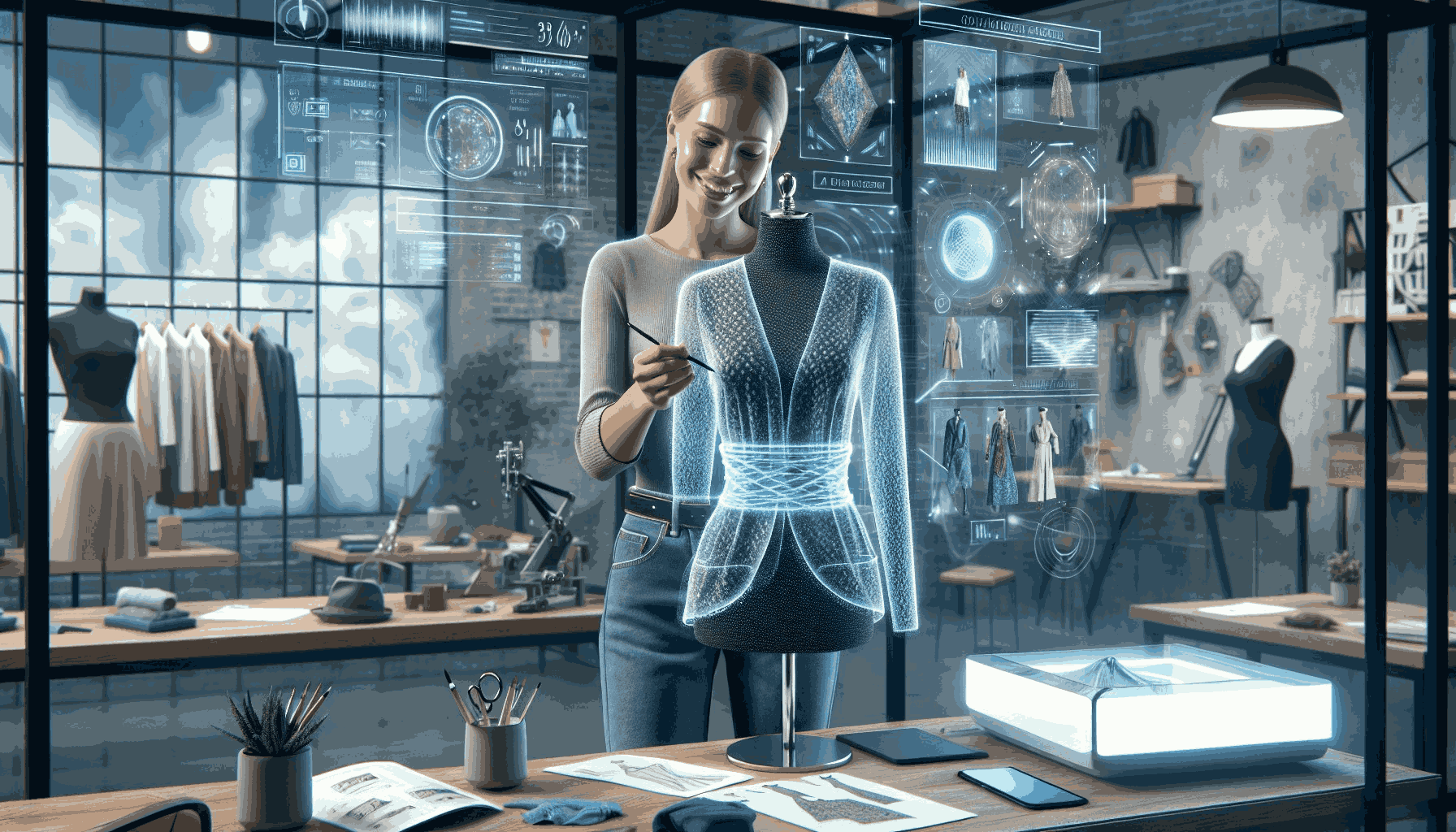
Last updated on December 7th, 2024 at 01:43 pm
Have you ever imagined a world where your clothes could change color at will, or where a virtual mirror could show you how an outfit looks without trying it on? These futuristic concepts are part of fashion tech innovations where cutting-edge developments intersect between fashion and technology! From AI-designed couture to blockchain-tracked sustainable garments, innovative fashion trends are reshaping how we design, buy, and wear clothing. The fashion industry is undergoing a seismic shift that’s as exciting as it is revolutionary.
In this digital age, fashion isn’t just about looking good—it’s about feeling good, doing good, and pushing the boundaries of what’s possible. Whether you’re a tech enthusiast, a fashion aficionado, or simply curious about the future of what we wear, get ready to explore the latest in fashion tech trends. From smart textiles that adapt to your body temperature to 3D-printed shoes customized to your feet, we’re about to embark on a journey through the wardrobe of tomorrow.
AI and Machine Learning in Fashion Design
Incorporating AI and Machine Learning in fashion design is not just futuristic—it’s happening now. The fashion industry is experiencing a technological revolution, with AI and machine learning at the forefront of the latest fashion innovations. These cutting-edge technologies are transforming fashion design, production, and personalization, from AI-powered design software to automated pattern generation.
Personalized Style Recommendations
AI-powered algorithms are revolutionizing the way consumers discover and choose clothing. AI personalization tools analyze user preferences to curate highly customized fashion recommendations. By analyzing vast amounts of data, including purchase history, browsing behavior, and social media preferences, these systems can provide highly tailored style recommendations. This personalization not only enhances the shopping experience but also helps fashion brands better understand and cater to their customer’s tastes.
Additionally, AI can enhance fashion marketing strategies by identifying upcoming fashion trends and predicting consumer behavior.
| Benefits of AI-Driven Style Recommendations |
|---|
| Increased customer satisfaction |
| Higher conversion rates |
| Reduced returns |
| Improved inventory management |
Trend Forecasting and Analysis
Machine learning models are becoming increasingly adept at predicting fashion trends. By analyzing social media posts, runway shows, and consumer behavior, these systems can identify emerging styles and color palettes with remarkable accuracy. This capability allows designers and brands to:
- Stay ahead of the competition
- Reduce waste by producing more targeted collections
- Optimize inventory planning
- Respond quickly to changing consumer preferences
Virtual Fitting Rooms
The integration of AI and augmented reality has given rise to virtual fitting rooms, which have become essential in online retail. These digital tools allow customers to:
- Create accurate 3D avatars of themselves
- Virtually try on clothing items
- See how garments drape and fit their body type
- Make more informed purchasing decisions
This growing trend in e-commerce not only enhances the online shopping experience but also has the potential to significantly reduce return rates, a major pain point for e-commerce fashion retailers.
Automated Pattern Generation
AI is streamlining the design process through automated pattern generation. This technology can:
- Create basic patterns based on input parameters
- Optimize existing patterns for different sizes and body types
- Generate variations of designs quickly and efficiently
By automating time-consuming tasks, designers can focus more on creativity and innovation, leading to faster product development cycles and increased productivity.
As we delve deeper into the world of fashion tech innovations, we’ll explore how smart fabrics are taking clothing to the next level, combining style with functionality in unprecedented ways.
Smart Fabrics Revolutionizing Clothing
The world of fashion is undergoing a revolutionary transformation, thanks to the advent of smart fabrics. These innovative textiles are not just about looking good; they’re about enhancing functionality and improving our daily lives. Let’s explore some of the groundbreaking developments in smart fabrics that are reshaping the clothing industry.

A. Energy-harvesting Materials
Energy-harvesting fabrics are at the forefront of smart textile innovation. These materials can convert various forms of energy from the environment into electrical power, potentially turning our clothing into mobile power sources.
- Solar-powered fabrics: Incorporate photovoltaic cells to harness solar energy
- Piezoelectric textiles: Generate electricity from mechanical stress or movement
- Thermoelectric materials: Convert body heat into electrical energy
| Energy Source | Fabric Type | Potential Applications |
|---|---|---|
| Solar | Photovoltaic | Outdoor wear, backpacks |
| Movement | Piezoelectric | Sports clothing, shoes |
| Body Heat | Thermoelectric | Winter wear, gloves |
B. Self-cleaning Fabrics
Self-cleaning fabrics represent a significant leap in clothing technology, offering convenience and sustainability benefits.
- How they work:
- Hydrophobic coatings repel water and stains
- Photocatalytic materials break down organic matter when exposed to light
- Nanoparticles actively neutralize odor-causing bacteria
These innovations not only keep clothes fresher for longer but also reduce the need for frequent washing, conserving water and energy.
C. Temperature-regulating Textiles
Temperature-regulating fabrics adapt to environmental conditions and body temperature, ensuring optimal comfort in various climates.
- Phase-change materials (PCMs): Absorb or release heat as needed
- Shape-memory polymers: Change structure to trap or release heat
- Adaptive insulation: Adjusts thickness based on temperature
These advanced textiles are particularly beneficial for outdoor enthusiasts, athletes, and professionals working in extreme environments.
D. Moisture-wicking Innovations
Moisture management is crucial for comfort and performance in clothing. The latest moisture-wicking innovations go beyond traditional fabrics:
- Biomimetic fabrics: Inspired by natural structures like pinecones
- Microfiber technology: Ultra-fine fibers enhance capillary action
- 3D-engineered fabrics: Structured to create optimal moisture channels
| Feature | Benefit |
|---|---|
| Quick-drying | Reduces chafing and discomfort |
| Odor control | Inhibits growth of odor-causing bacteria |
| Thermal regulation | Helps maintain ideal body temperature |
These moisture-wicking innovations are revolutionizing sportswear, workwear, and everyday clothing, offering enhanced comfort and performance.
As we’ve seen, smart fabrics are transforming the way we think about and interact with our clothing. From powering our devices to regulating our body temperature, these innovative textiles are paving the way for a more functional and sustainable future in fashion. Next, we’ll explore how blockchain technology is revolutionizing fashion supply chains, ensuring transparency and authenticity in the industry.
Blockchain Technology in Fashion Supply Chains
As we delve deeper into the world of fashion tech innovations, it’s crucial to explore how blockchain technology is transforming global fashion supply chains. From ensuring transparency to verifying authenticity, blockchain is gaining momentum in the sustainable fashion industry.
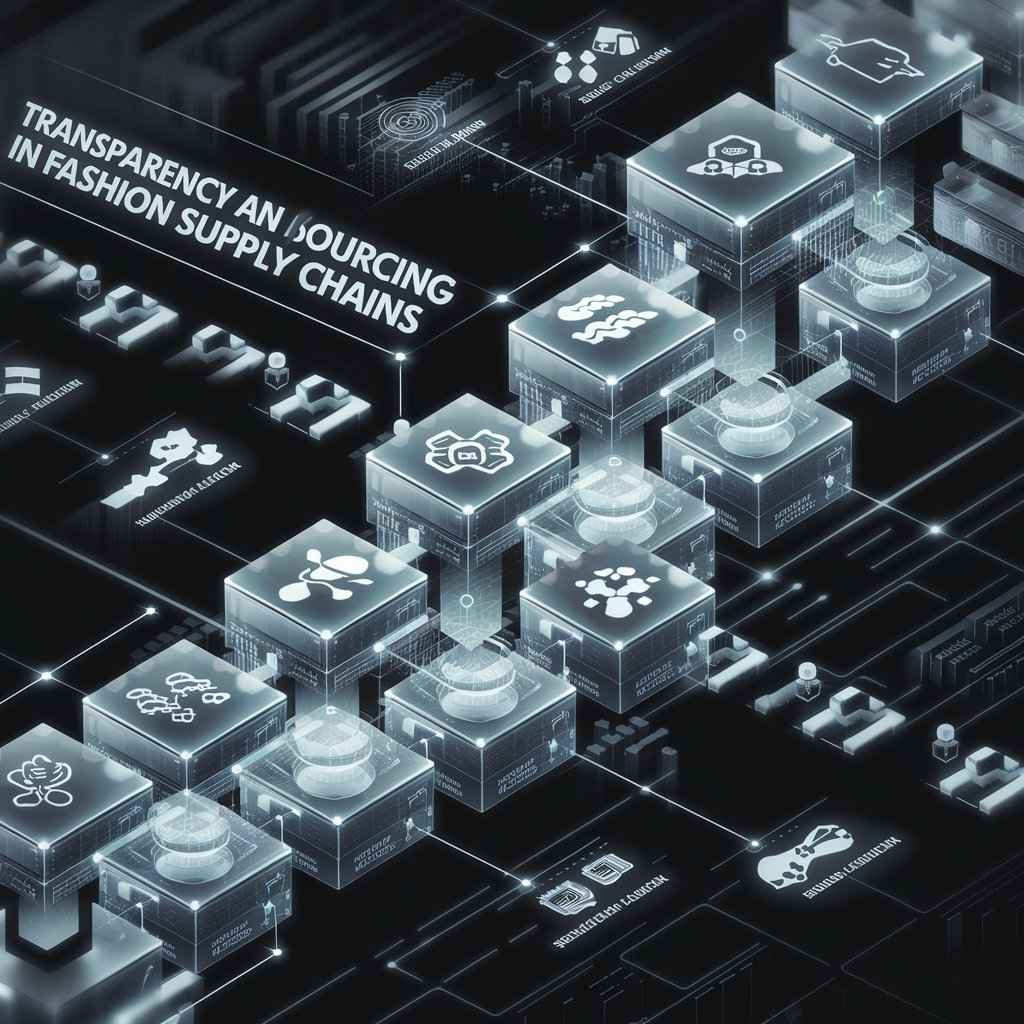
Explanation of blockchain technology and its relevance to fashion
Blockchain technology, at its core, is a decentralized digital ledger that records transactions across multiple computers. In the fashion industry, this translates to a transparent and immutable record of every step in a product’s journey, from raw materials to the final garment.
Key features of blockchain in fashion:
- Decentralization
- Transparency
- Immutability
- Traceability
How blockchain ensures transparency and ethical practices in supply chains
Blockchain’s impact on fashion supply chains is profound, addressing long-standing issues of sustainability and ethical production. By implementing this technology, fashion brands can:
- Verify the authenticity of materials
- Track labor conditions and fair wages
- Ensure compliance with environmental standards
- Reduce counterfeiting and fraud
- Improve sustainability by reducing waste and tracking the lifecycle of products
| Benefits | Description |
|---|---|
| Transparency | Provides a clear view of each stage in the supply chain |
| Accountability | Holds all parties responsible for their actions |
| Efficiency | Streamlines processes and reduces paperwork |
| Consumer Trust | Allows customers to verify product origins and ethical practices |
Real-world applications and future potential of blockchain in fashion
Several fashion brands have already embraced blockchain technology, showcasing its practical applications:
- Provenance tracking: Luxury brands use blockchain to prove the authenticity of their products.
- Sustainable sourcing: Eco-friendly brands leverage blockchain to verify their sustainable practices.
- Ethical labor: Companies implement blockchain to ensure fair labor practices throughout their supply chain.
Curious about how technology is driving eco-friendly fashion? Check out our in-depth article on Eco-Design in Fashion to see how innovative design strategies are shaping a sustainable future for the industry. 🌱✨
As we look to the future, blockchain technology holds immense potential for further revolutionizing the fashion industry. From enabling circular fashion models to creating new forms of digital ownership for virtual fashion items, blockchain is set to play a pivotal role in shaping the future of fashion.
Next, we’ll explore how wearable tech is being seamlessly integrated into fashion, creating a new era of smart clothing and accessories.
Wearable Tech Integration
As wearable technology trends gain popularity, wearable tech has emerged as a game-changing trend in the industry. From smartwatches to health-monitoring jewelry, this fusion of style and functionality is transforming how we interact with our clothing and accessories, offering innovative solutions for health, fitness, and everyday life.
Wondering what the future of fashion looks like? Dive into the world of Digital Fashion where technology meets style. From virtual runways to digital wardrobes, this is the next frontier of fashion! 💻👗
Connected fashion devices like smart glasses and fitness trackers are not only functional but also elevate your personal style.
Fitness Tracking Accessories
Fitness tracking accessories have become ubiquitous in recent years, with sleek designs that seamlessly blend into our daily wardrobes. These devices go beyond simple step counting, offering a range of features to monitor our health and wellness:
- Heart rate monitoring
- Sleep tracking
- Stress level assessment
- Workout intensity measurement
Many fitness trackers now come with customizable bands and faces, allowing users to express their personal style while staying on top of their health goals.
Smart Jewelry with Health Monitoring
The integration of health monitoring capabilities into jewelry pieces has opened up new possibilities for fashion-conscious individuals who want to keep track of their well-being discreetly. Smart jewelry offers:
- Blood oxygen level monitoring
- Menstrual cycle tracking
- Mindfulness and meditation guidance
- Emergency SOS features
| Smart Jewelry Type | Key Features |
|---|---|
| Rings | Sleep tracking, activity monitoring |
| Necklaces | Posture correction, breath analysis |
| Bracelets | Stress management, hydration reminders |
These pieces often feature elegant designs that can be worn to formal events or in professional settings, making health tracking more accessible and stylish than ever before.
AR-Enabled Glasses for Fashion
Augmented Reality (AR) glasses are pushing the boundaries of fashion and technology integration. These innovative eyewear pieces offer:
- Virtual try-on experiences for makeup and accessories
- Real-time fashion recommendations based on current outfit
- Social media integration for instant sharing of looks
- Navigation and information overlay for shopping experiences
AR glasses are not only functional but are also being designed with style in mind, featuring collaborations with renowned fashion designers to create frames that are both technologically advanced and aesthetically pleasing.
Connected Footwear for Performance Analysis
The world of footwear has been revolutionized by the integration of smart technology. Connected shoes now offer:
- Gait analysis for runners
- Pressure distribution mapping for improved comfort
- Automatic tightening and loosening for perfect fit
- GPS tracking for navigation and distance measurement
These smart shoes are particularly valuable for athletes and fitness enthusiasts, providing real-time feedback to improve performance and reduce the risk of injury. However, they’re also gaining popularity among casual users who appreciate the blend of comfort, style, and technology.
As we move forward, the line between fashion and technology continues to blur, with wearable tech becoming an integral part of our wardrobes. The next frontier in fashion tech innovations lies in the realm of 3D printing, which is set to transform how we design and produce clothing items.
3D Printing in Fashion
The fashion industry is experiencing a revolutionary transformation with the advent of 3D printing technology. 3D printing in fashion allows brands to create sustainable, customized pieces that reduce waste. This innovative approach is reshaping how designers create, produce, and customize fashion items, offering exciting possibilities for both creators and consumers alike.
With 3D printed fashion, brands can now produce on-demand, personalized items at scale, reducing excess inventory and minimizing waste.
A. Customizable accessories on demand
3D printing has opened up a world of possibilities for personalized fashion accessories. Consumers can now design and create unique pieces tailored to their exact specifications. From intricate jewelry to bespoke eyewear frames, the options are virtually limitless.
| Benefits of 3D Printed Accessories | Examples |
|---|---|
| Personalization | Custom-fit rings, personalized phone cases |
| Quick turnaround | On-demand production of accessories |
| Cost-effective for small batches | Limited edition designer pieces |
| Reduced waste | Print only what’s needed, minimize overstock |
B. Sustainable material alternatives
As the fashion industry grapples with sustainability concerns, 3D printing offers eco-friendly alternatives to traditional materials. Designers are experimenting with biodegradable filaments and recycled plastics, creating fashion items that are both stylish and environmentally conscious.
- Recycled plastic filaments from ocean waste
- Plant-based materials like PLA (polylactic acid)
- Biodegradable options for temporary or seasonal fashion items
C. Rapid prototyping for designers
3D printing has revolutionized the design process by enabling rapid prototyping. Designers can now quickly iterate and refine their ideas, significantly reducing the time and cost associated with traditional prototyping methods.
- Faster design cycles
- Reduced material waste during the development phase
- Easier collaboration and sharing of design files
- Ability to test multiple variations simultaneously
D. Complex geometric structures in clothing
One of the most exciting aspects of 3D printing in fashion is the ability to create complex geometric structures that were previously impossible or impractical to produce using traditional manufacturing methods.
| Geometric Innovations | Applications |
|---|---|
| Lattice structures | Breathable, lightweight garments |
| Interlocking patterns | Flexible, movement-friendly designs |
| Fractal-inspired forms | Unique textures and visual effects |
| Biomimetic structures | Performance-enhancing sportswear |
These intricate designs not only push the boundaries of fashion aesthetics but also offer functional benefits such as improved breathability, flexibility, and durability.
As 3D printing technology continues to advance, we can expect even more groundbreaking applications in the fashion industry. From sustainable production methods to unprecedented levels of customization, this technology is set to redefine our relationship with clothing and accessories. Next, we’ll explore how virtual and augmented reality are transforming the way we shop for and experience fashion.

Virtual and Augmented Reality: Enhancing the Shopping Experience
Now that we’ve explored various fashion tech innovations, let’s dive into how virtual and augmented reality are revolutionizing the shopping experience.
Overview of virtual try-ons and augmented reality in retail
Virtual reality shopping experiences are transforming how we shop for clothes. Virtual try-ons and augmented reality (AR) are among the hottest trends in online fashion retail. These technologies bridge the gap between online and in-store shopping experiences, offering customers a more immersive and interactive way to explore and evaluate products.
As AR technology in fashion continues to evolve, it is reducing return rates, improving customer satisfaction, and offering a more engaging shopping experience.

- Virtual try-on: Allow customers to see how clothing or accessories look on them without physically trying them on
- AR in retail: Overlays digital information onto the real world, enhancing the shopping environment
How AR is transforming online shopping and reducing returns
AR technology is making significant strides in improving the online shopping experience and reducing return rates for fashion retailers.
| Benefits of AR in Online Shopping | Impact on Returns |
|---|---|
| Accurate size and fit visualization | Decreased returns due to sizing issues |
| True-to-life color and texture representation | Reduced returns from unmet expectations |
| 360-degree product views | Improved customer satisfaction and fewer returns |
Examples of innovative brands using VR and AR to enhance customer engagement
Several forward-thinking fashion brands have embraced VR and AR technologies to create unique and engaging shopping experiences:
- Warby Parker: Virtual try-on app for eyewear
- ASOS: AR-powered “See My Fit” feature for clothing
- Gucci: AR shoe try-on through their mobile app
- Sephora: Virtual Artist app for makeup try-ons
These innovations are not only enhancing customer engagement but also setting new standards for the future of fashion retail. As we move forward, we’ll explore how 3D printing is reshaping the fashion industry.
Sustainable Fashion Technologies
As we delve into the realm of sustainable fashion technologies, we’ll explore cutting-edge innovations that are transforming the industry and paving the way for a more eco-friendly future.
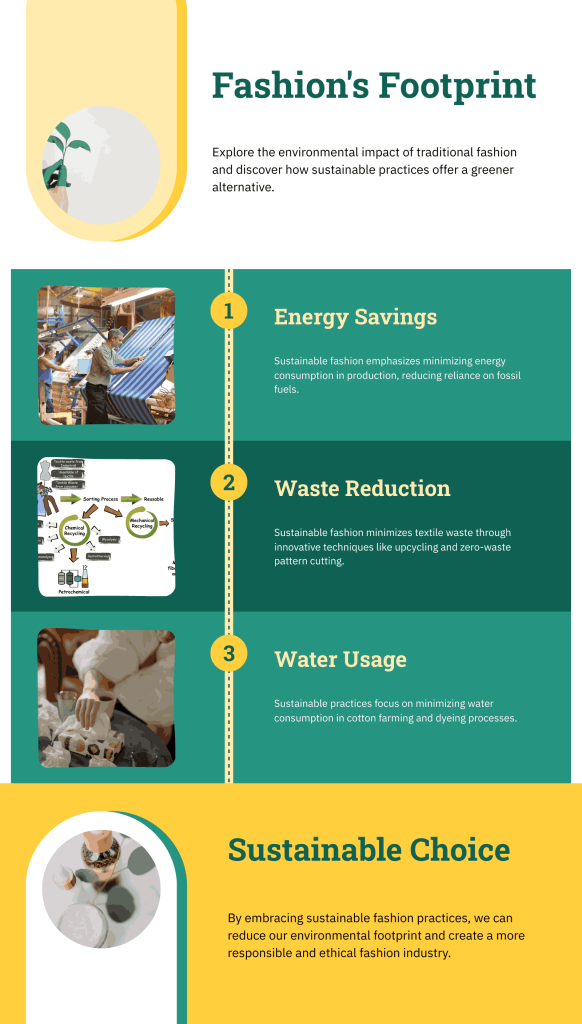
Ready to embrace a more eco-conscious wardrobe? Discover how sustainable fashion is transforming the industry with our comprehensive guide on Sustainable Fashion. Learn how your clothing choices can make a positive impact on the planet! 🌍♻️
A. Recycling Innovations for Textiles
Textile recycling has come a long way, with new technologies enabling more efficient and effective processes. One of the most promising innovations is chemical recycling, which breaks down fabrics at the molecular level, allowing for the creation of new fibers from old clothes. This process can handle mixed-fiber textiles, a significant advancement over traditional mechanical recycling methods.
| Technology | Benefits | Challenges |
|---|---|---|
| Chemical Recycling | Handles mixed fibers, produces high-quality recycled materials | Energy-intensive, requires specialized facilities |
| Mechanical Recycling | Low energy consumption, widely available | Limited to single-fiber textiles, lower quality output |
| Thermal Recycling | Can process contaminated textiles | Produces lower-grade materials |
B. Bio-fabricated Materials
Bio-fabrication is revolutionizing the fashion industry by creating sustainable alternatives to traditional textiles. These materials are grown using microorganisms, offering a low-impact solution to fabric production.
Some exciting bio-fabricated materials include:
- Mycelium leather: Made from mushroom roots
- Algae-based fabrics: Utilizing fast-growing aquatic plants
- Lab-grown spider silk: Mimicking the strength and elasticity of natural spider silk
C. Blockchain for Supply Chain Transparency
The growing demand for sustainable fashion is driving innovations in textile recycling, eco-friendly production methods, and blockchain technology for transparent supply chains. This increased visibility helps:
- Ensure ethical sourcing of materials
- Verify fair labor practices
- Authenticate sustainable production methods
- Reduce counterfeiting in the fashion industry
D. Water-saving Dyeing Techniques
Traditional dyeing processes consume vast amounts of water and often release harmful chemicals into the environment. Innovative water-saving techniques are addressing these issues:
- Waterless dyeing: Using supercritical carbon dioxide instead of water
- Air dyeing: Applying dyes using pressurized air
- Digital printing: Reducing water usage by up to 95% compared to traditional methods
These technologies not only conserve water but also minimize chemical waste and energy consumption.
E. Zero-waste Pattern Cutting Software
Zero-waste pattern cutting is a design approach that aims to eliminate fabric waste during the garment production process. Advanced software solutions are making this technique more accessible and efficient:
- 3D modeling: Allows designers to visualize and optimize patterns before cutting
- AI-powered pattern generation: Creates efficient layouts that maximize fabric usage
- Virtual fitting: Reduces the need for physical prototypes, minimizing material waste
Frequently Asked Questions (FAQs)
Conclusion
By implementing these technologies, fashion brands can significantly reduce their environmental impact while improving production efficiency.

As we move forward, these sustainable fashion technologies will play a crucial role in shaping a more responsible and eco-conscious industry. The integration of these innovations with other advancements in fashion tech will undoubtedly lead to a more sustainable and ethical future for fashion.
The fashion industry is experiencing a revolutionary transformation, driven by cutting-edge technological advancements. From AI-powered design processes to smart fabrics and blockchain-enabled supply chains, these innovations are reshaping how we create, produce, and consume fashion. Wearable tech, 3D printing, and immersive shopping experiences through VR and AR are pushing the boundaries of what’s possible in clothing and accessories.
As we embrace these exciting developments, it’s crucial to remember the importance of sustainability in fashion. Emerging technologies are playing a vital role in creating more eco-friendly practices, reducing waste, and promoting ethical production. By staying informed and supporting brands that leverage these innovations responsibly, we can contribute to a more sustainable and technologically advanced fashion future.


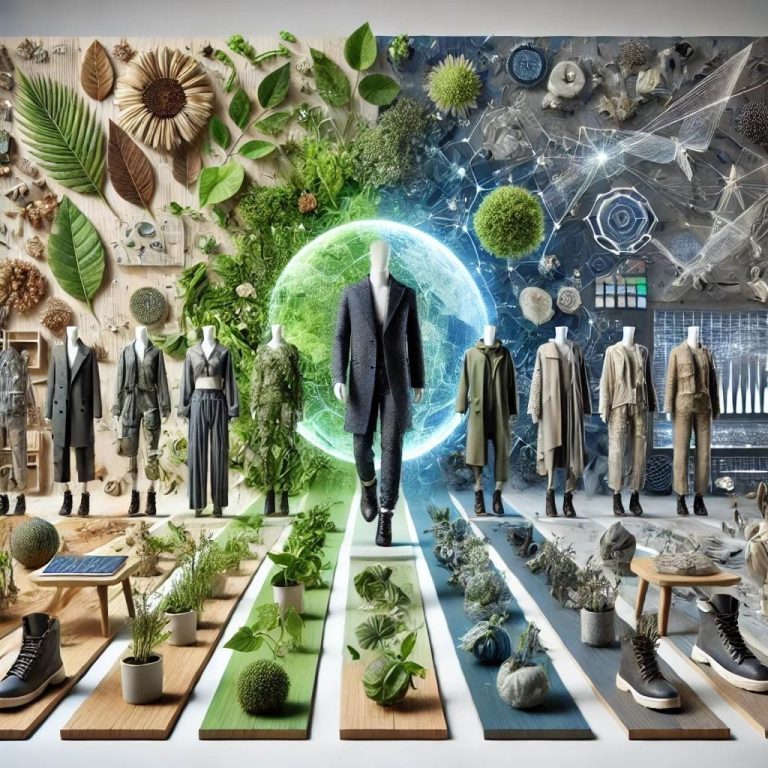


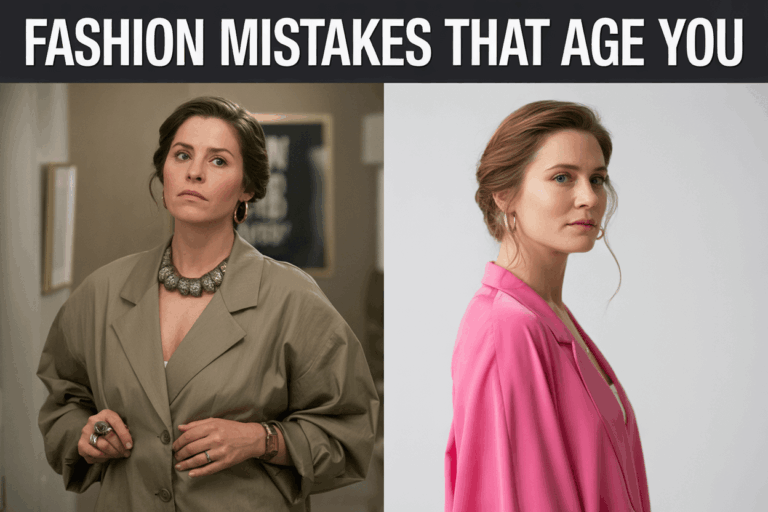
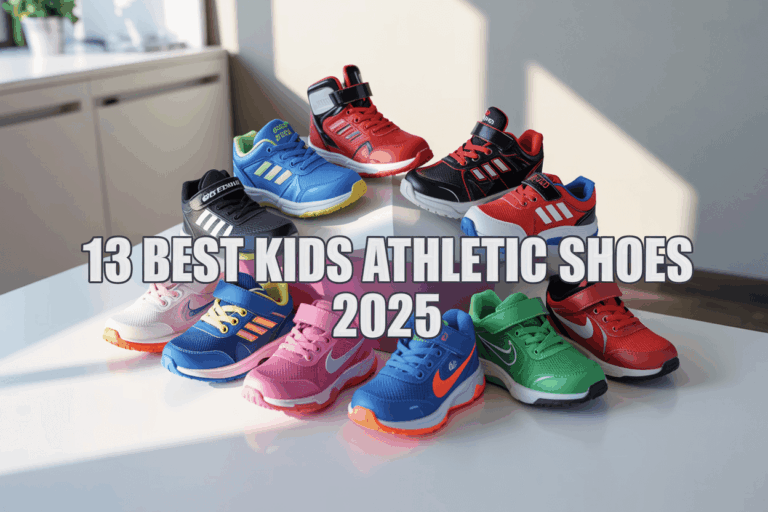
Everyone loves it when people come together and share ideas.
Great blog, keep it up!
It’s enormous that you are getting thoughts from this post as
well as from our discussion made at this time.
My family always say that I am wasting my time here at net, except I know I
am getting familiarity everyday by reading thes nice content.
Thanks for the sensible critique. Me & my neighbor were just preparing to do some research on this. We got a grab a book from our area library but I think I learned more from this post. I am very glad to see such excellent information being shared freely out there.
Youre so cool! I dont suppose Ive read anything like this before. So good to seek out any individual with some authentic thoughts on this subject. realy thank you for beginning this up. this website is something that is needed on the net, someone with a bit of originality. helpful job for bringing something new to the internet!
Simply wish to say your article is as surprising. The clearness in your post is simply great and i could assume you are an expert on this subject. Well with your permission let me to grab your feed to keep updated with forthcoming post. Thanks a million and please carry on the enjoyable work.
Its like you learn my thoughts! You seem to know a lot approximately this, such as you wrote the guide in it or something. I believe that you just could do with some to pressure the message home a little bit, but other than that, that is magnificent blog. An excellent read. I will definitely be back.
I like your writing style truly loving this website .
great issues altogether, you just received a emblem new reader. What may you suggest about your publish that you made some days ago? Any sure?
Some times its a pain in the ass to read what website owners wrote but this site is very user friendly! .